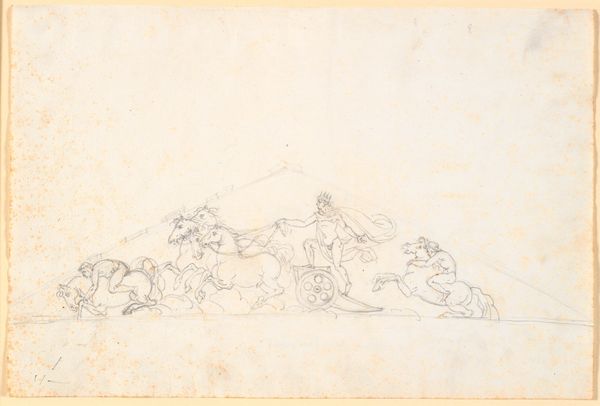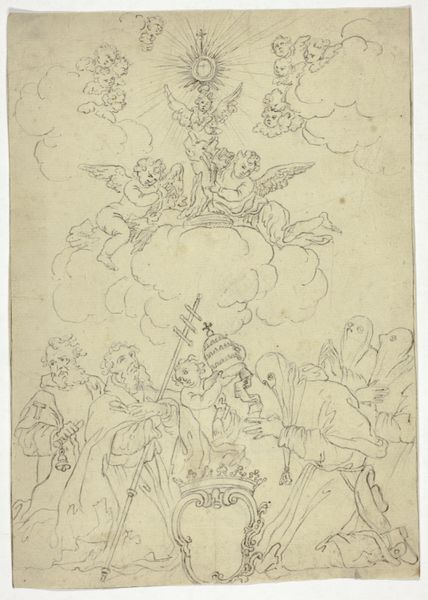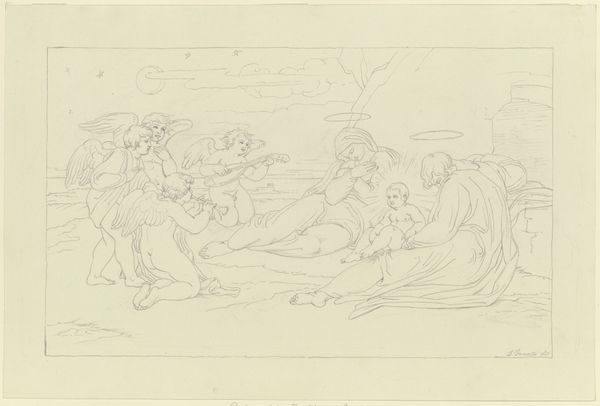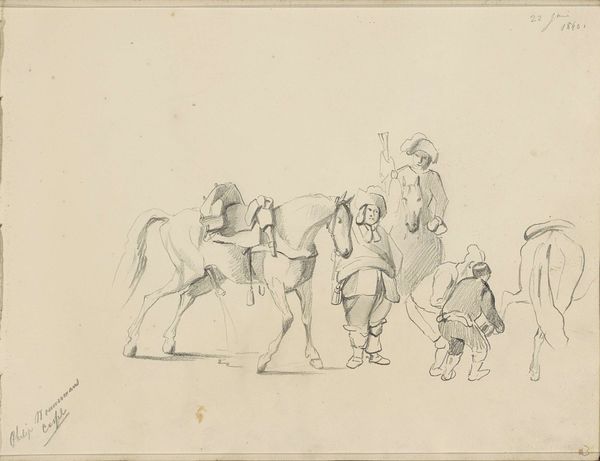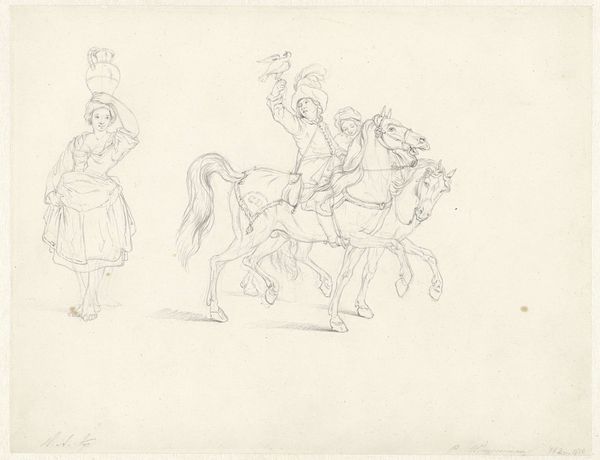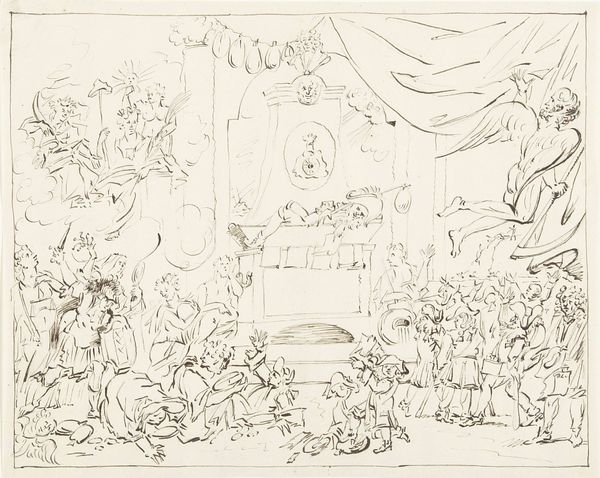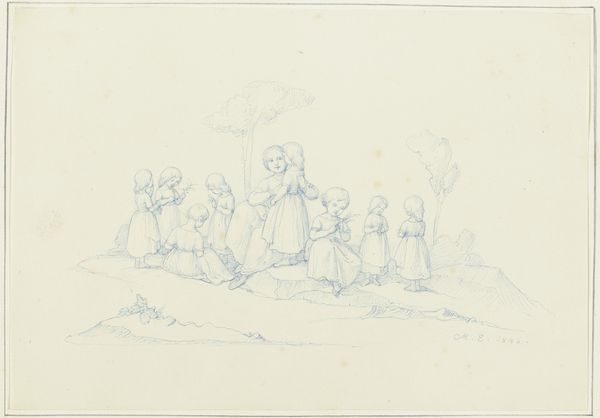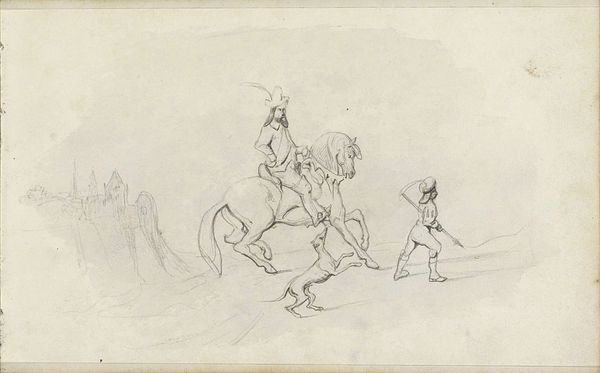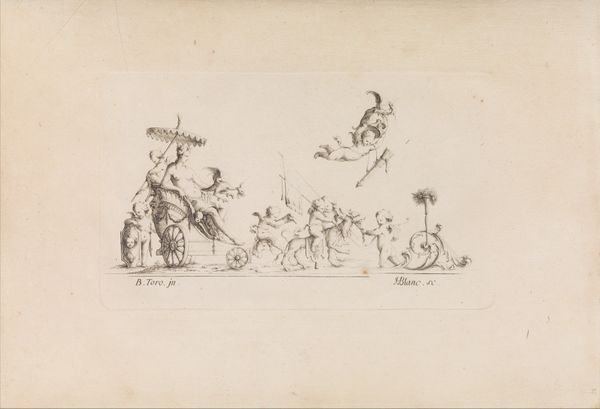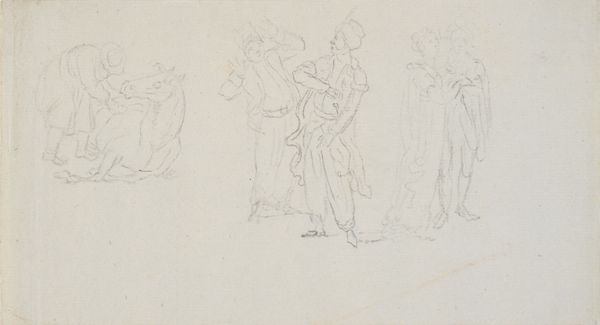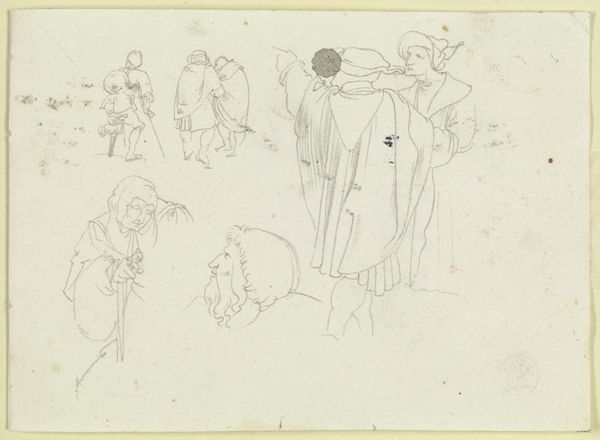
drawing, ink
#
drawing
#
narrative-art
#
ink
#
romanticism
#
genre-painting
Dimensions: height 190 mm, width 270 mm
Copyright: Rijks Museum: Open Domain
Editor: Welcome, everyone. We're looking at Pieter Bartholomeusz. Barbiers' ink drawing, "Familie met kinderen die schoonmaken," which translates to "Family with children cleaning," dating from between 1782 and 1837. I’m really struck by the division of the image. There is such a clear grouping to each side – family life to the left, almost folklore fantasy to the right. It feels a bit… fragmented. What catches your eye when you view this piece? Curator: Immediately, it's the contrast of line quality that commands my attention. On the left, the family grouping exhibits delicate, almost skeletal lines, suggesting a fleeting or perhaps idealized representation. Notice how those lines capture gestures, but without firm definition of form. Compare this with the more deliberate, heavily outlined figures on the right side of the composition. Their shapes and detail are accentuated, seemingly weighty compared to the light ethereality of the familial scene. This visual dichotomy implies two separate realities within a single pictorial plane. Does that resonate with your initial reaction? Editor: It does. So, the line weights emphasize that separation. The fairy tale side appears more assertive due to the boldness of line? Curator: Precisely. The density of line impacts how we perceive depth and volume, and indeed the symbolic meaning of each group. Are we seeing fantasy contrasted with reality, or is the artist making some broader statement regarding the nature of visual representation? Editor: That’s a great point, especially considering this work exists in a period we associate with Romanticism. Perhaps he is romanticizing domestic labor by presenting two realities or possible lives coexisting in one artwork. Curator: Exactly! Notice the almost diagrammatic quality of the familial scene versus the narrative solidity given to the folkloric. Consider also the very limited tonal range. The artwork invites inquiry into the essence of form itself and how the viewer assembles distinct lines into representational ideas. Editor: That’s fascinating. It definitely changed the way I view the artwork – seeing beyond just the scene and thinking more about the elements and principles of art, like the importance of the artist’s choices around line!
Comments
No comments
Be the first to comment and join the conversation on the ultimate creative platform.
